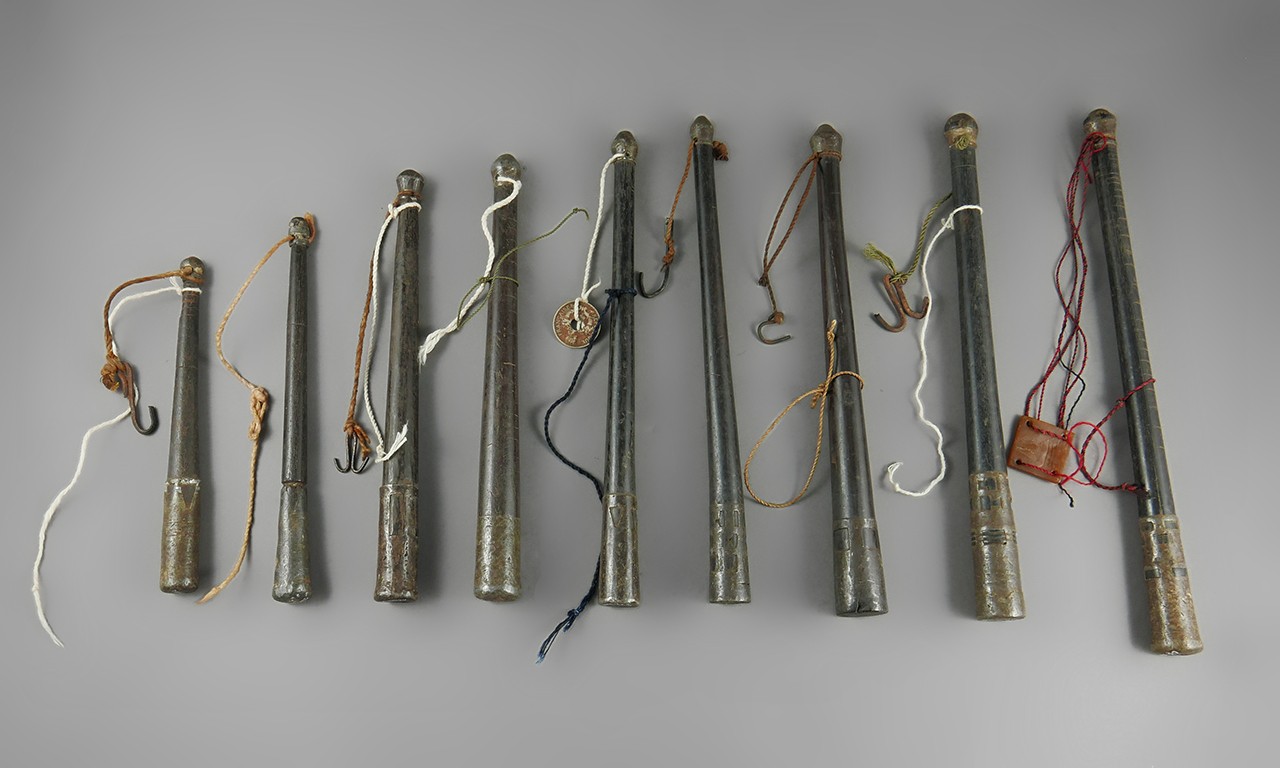 |
Bismar Scales, 19th to 20th Century
Laos
Wood, metal, fiber and tortoiseshell
2019.23.71-.80
Gift of Anne and Long Shung Shih |
Scales of Justice
When most think of scales, they likely summon an image of Lady Justice, perhaps guarding the entrance of a courthouse, with golden scales for balancing the deeds of the good, evil, and those difficult to classify in-betweeners. While most weighing is now done by electronically measuring the amount of downward force applied to a plate, a variety of tools have traditionally been used to do this work, Lady Justice’s tool of choice included. This post looks at a selection of scales and weights from two donations that came to the Bowers Museum in Fall 2019; it compares two types of beam balance scale, both of which are still used in Southeast Asia up to the modern day.
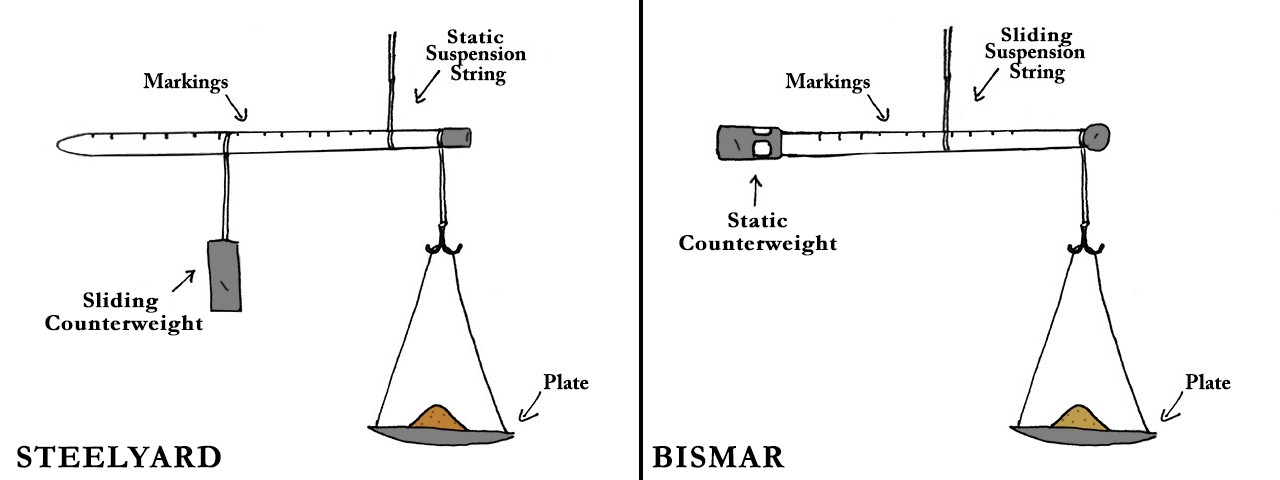 |
| Illustration of the various parts of steelyard and bismar balances. Drawn near to scale. |
How They Work
The two types of scale discussed here are the steelyard and the bismar. Most are likely familiar with equal arm beam balances which balance perfectly when nothing is being weighed. However, both steelyard and bismar balances are asymmetrical. The first goes by many different names including dotchin—an Anglicization of the Chinese name—and gănchèng—which directly translates to “stick weight” in Mandarin. It has a horizontal beam with an immovable cord from which the scale would be held near to a lead-tipped end. A second fiber cord closer to the end of the same side of the scale has a hook from which either a plate would have held the object that was being weighed, or the item itself could have been directly attached. The other end of the scale has tick marks which tell the user the weight of what is being measured. A bronze weight attached to a third cord could be slid up or down the length of the beam until it and the object in the plate balanced perfectly. Bismar scales on the other hand are reversed in terms of the suspension cord and counterweight being movable, that is, they have a static counterweight in the opposite end of the beam from the where the plate hangs and weight is instead calculated by moving the suspension cord along the length of the beam. Both styles of scale are typically are no longer than fourteen inches, which allows them to not only be easily accessible, but also highly portable.
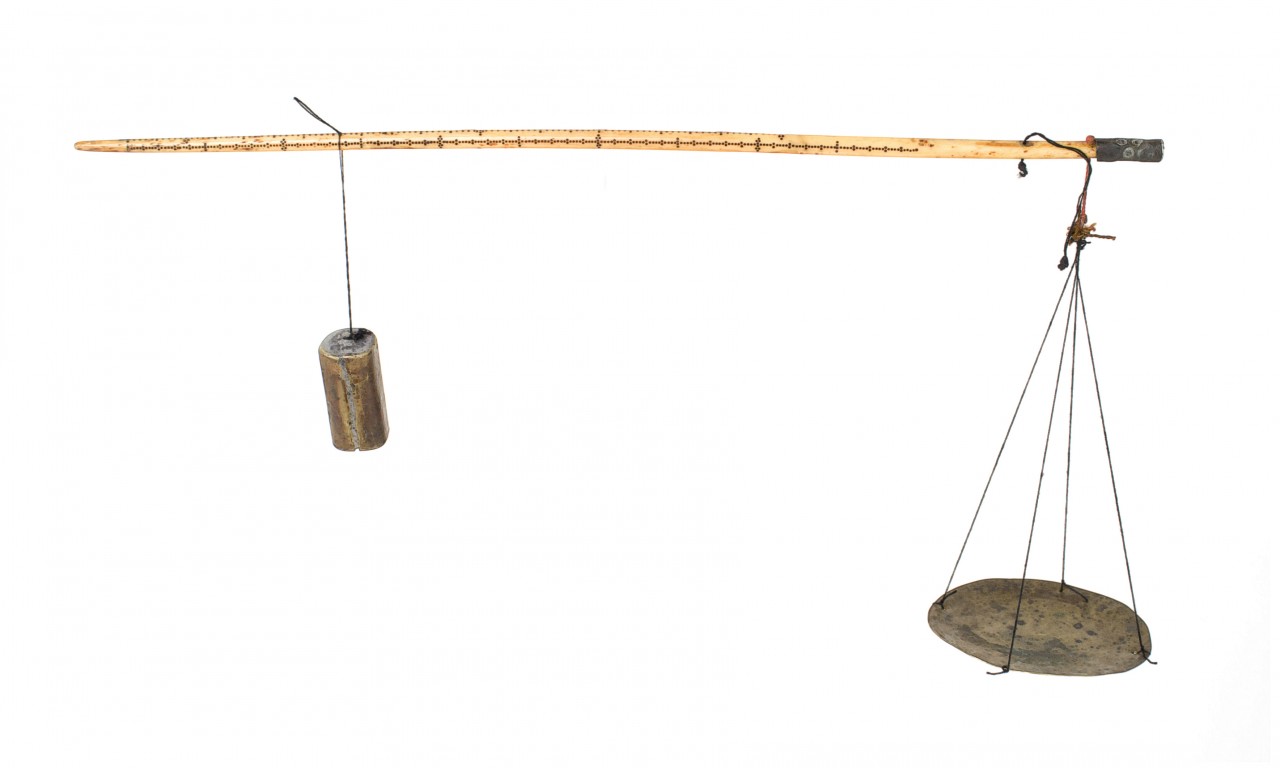 |
Steelyard Scale, 19th Century
Han culture; Guizhou Province, China
Wood, string, ivory and metal; 3 3/8 x 16 in.
2019.22.51a-c
Anonymous Gift |
Roman It’s Way Across Eurasia
There is some evidence that steelyard scales date to at least 5000 years ago, but it is commonly accepted that the modern form developed in Rome, where they were called statera, and China independent from one another around 200 BCE. Since their invention, the scales have seen use throughout the centuries and continued to evolve in their design until relatively recently in the west. These scales were predominantly used in markets to measure metals, foodstuffs and raw materials. Despite weighing a multitude of commodities, the scales also earned their oft-used moniker of “opium scales” by their pervasive use in measuring opium during colonial involvement in the region.
Bismar balances were first developed circa 400 BCE either in India where they first appear in writings and art, or around the Mediterranean where they subsequently made their way to India. There they have been used continuously for more than 2,000 years. The scales were likely introduced to Laos by way of south Asian traders.
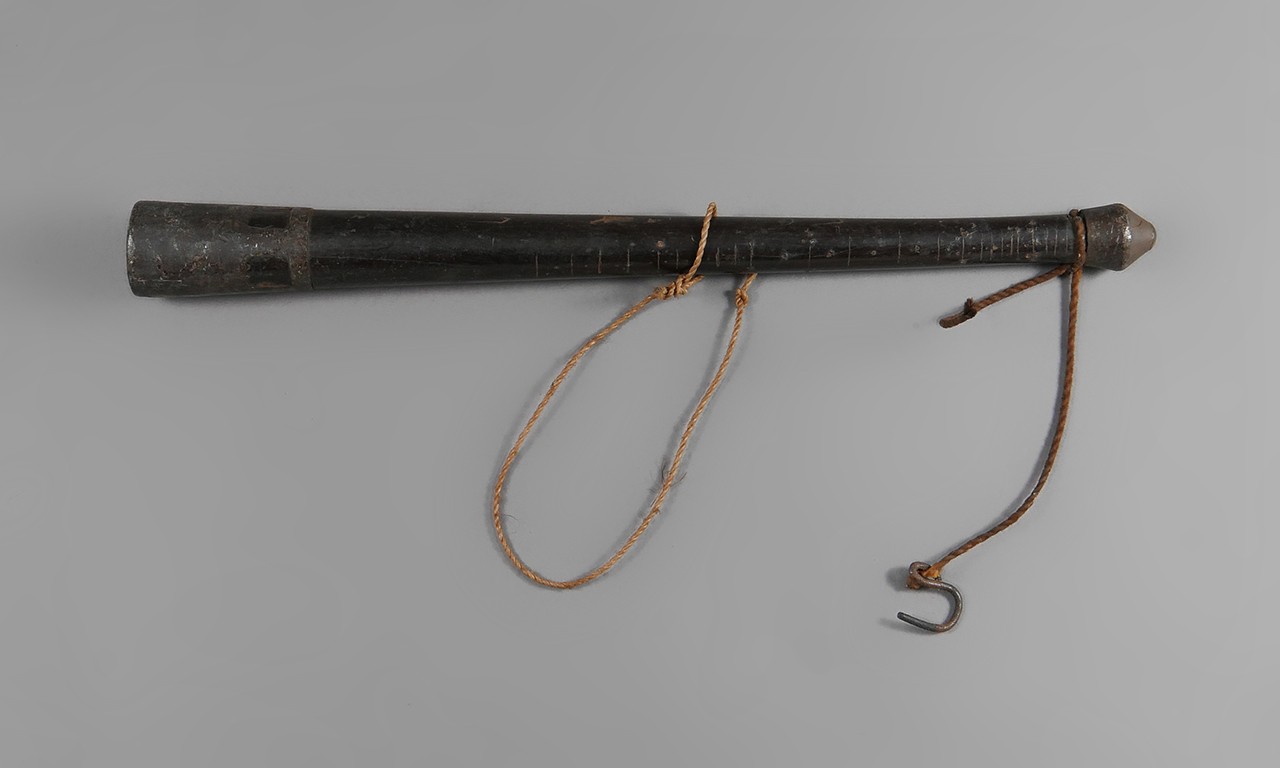 |
Bismar Scale, 19th to 20th Century
Laos
Wood, metal and fiber; 7 1/2 in.
2019.23.73
Gift of Anne and Long Shung Shih |
Opium Opus
Opium production for medicinal and recreational purposes rose to an all-time high when the British East India Company monopolized the opium trade between the late 18th and the 19th Centuries. Great Britain obtained their opium from India and smuggled it into or sold it in markets across Asia, Europe and the United States. Charters from the East India Company recorded sales comparisons, with one thousand chests of opium sold in 1767 and up to ten times that amount sold per year in the 1820s. While the scales featured in this post would not have taken a central role in the wholesale trade of opium, smaller amounts were often measured using both the scales in this post and the standard balance beam scale, earning both the Lao scales and weights the opium prefix. Although the importance and popularity of opium in the West declined in the early 20th Century, it is still often associated with these scales.
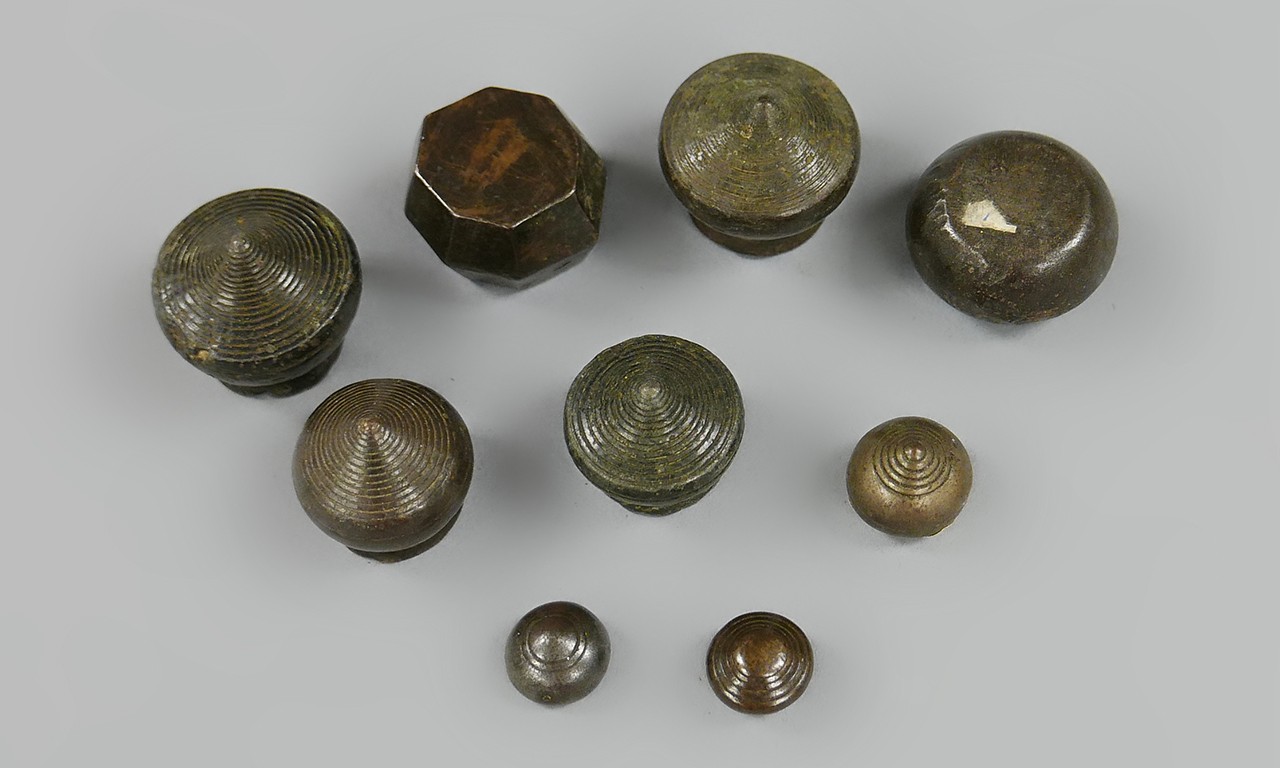 |
Weights, 19th to 20th Century
Laos
Bronze
2019.23.63-.71
Gift of Anne and Long Shung Shih |
A Balancing Act
The majority of the objects in this post, the nine bismar scales and nine small weights, come from Laos and the steelyard scale comes from China. Whereas the Laotian scales are made using a thick section of wood covered in lead and bronze, the example from China is much more delicate and uses an ivory beam. The latter would likely have been used to measure more precise amounts than the bismar scales. Also interesting is that despite coming from the same country as the bismar scales, the Laotian weights featured in this post would not have been used with this type of scale, but instead with equal arm balances. They were generally not heavy enough to meet the requirements of the sliding weight and would have been difficult to attach to a fiber cord. In general the different types of scales were employed at different times depending on the weight and specifics of the object being measured.
Post researched and guest co-written by Victoria McCormack, Volunteer for the Bowers Museum Collections Department. Edits have subsequently been made to this post based on information provided by Rick Willis. Text and images may be under copyright. Please contact Collection Department for permission to use. References are available on request. Information subject to change upon further research.






Comments 1
A fair and balanced account, as ever.